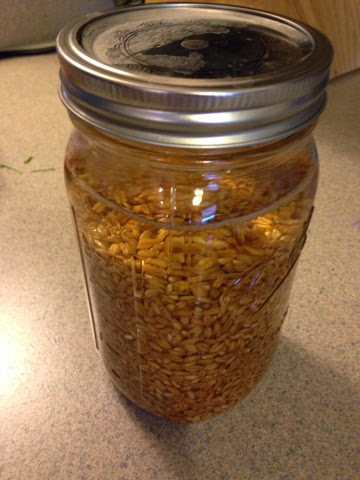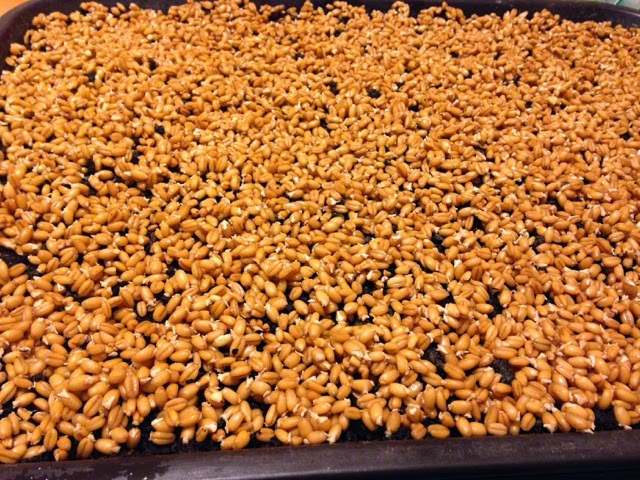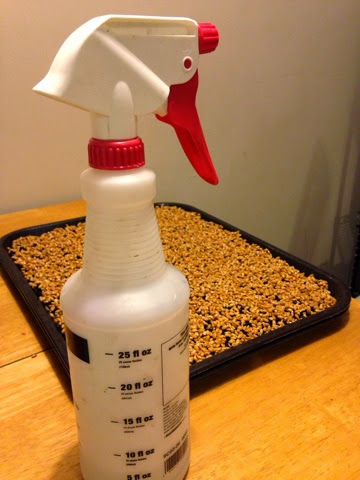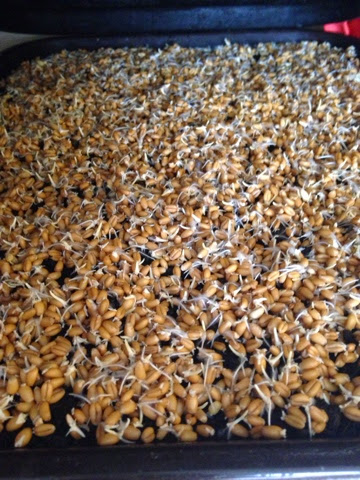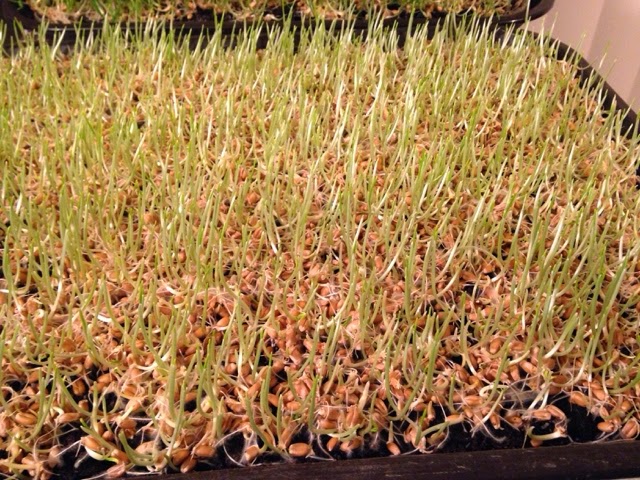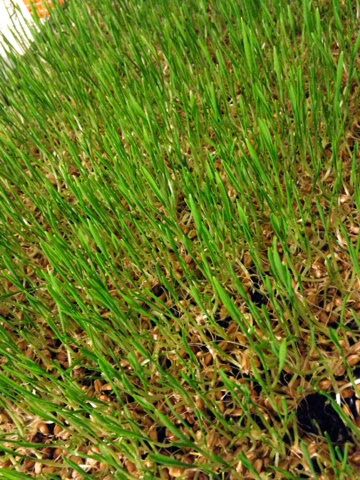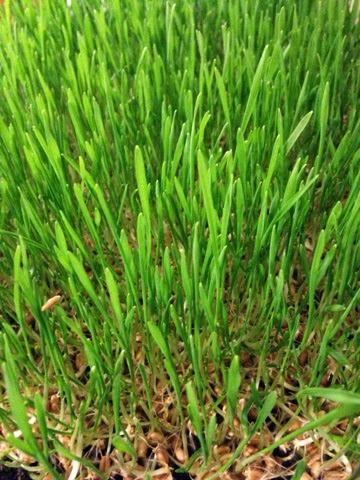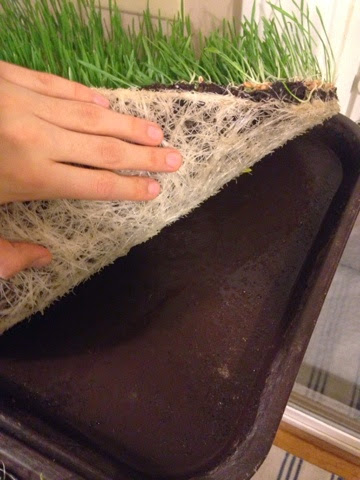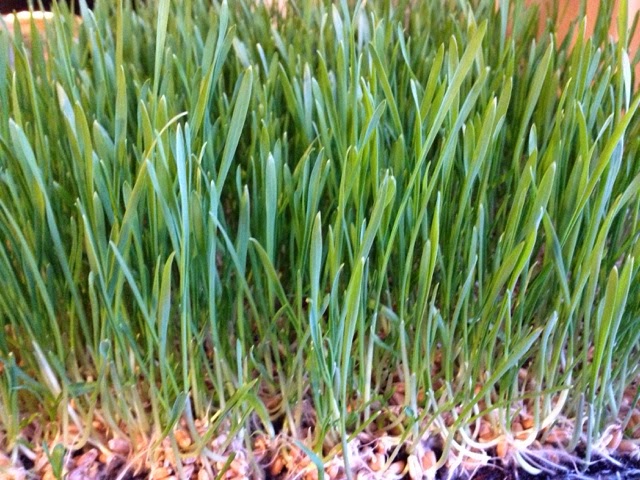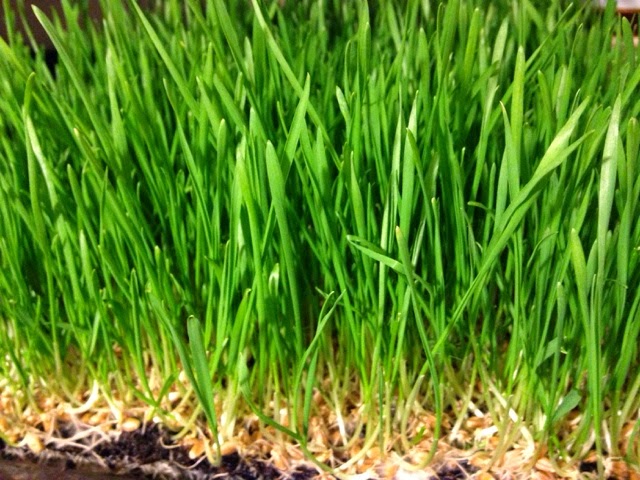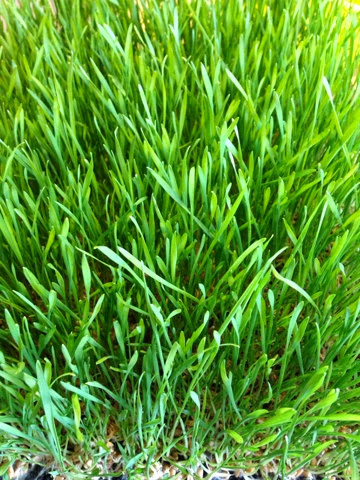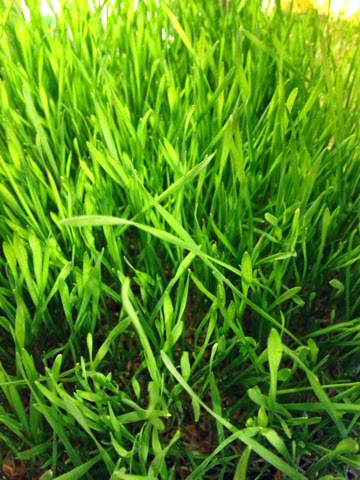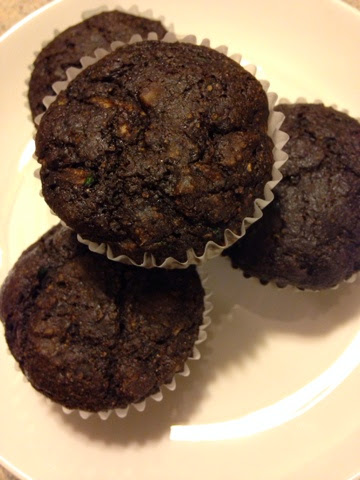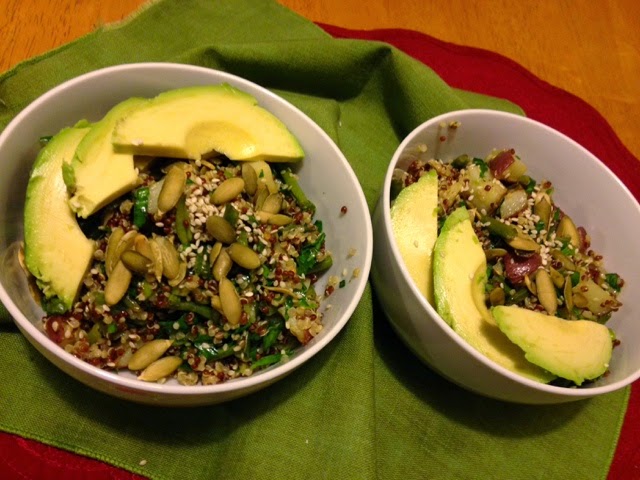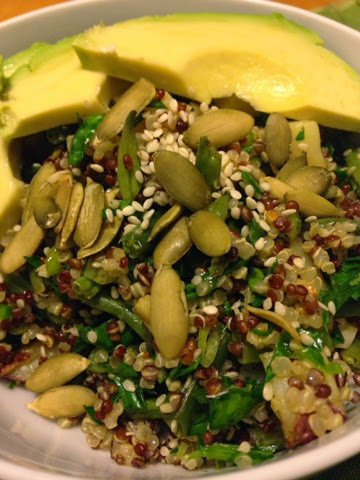Picture from HERE
"The doctor of the future will give no medicine, but will interest his patient in the care of the human frame, in diet and in the cause and prevention of disease." - Thomas Edison
Tuesday, February 24, 2015
Maple Pumpkin/Squash Muffins
I made these muffins today: Maple Sweetened Pumpkin Muffins with Oats by Cookie and Kate. They were excellent! I used flax eggs (1 Tb. ground flax and 3 Tb. water - stir and let sit for 5 min), and I used butternut squash for the pumpkin, and I ran out of whole wheat flour half way through, so I subbed quinoa flour for the rest! And....I used apple sauce instead of coconut oil.... when I have more time, I will write it out as my own recipe. But this one's a great base for now!
Monday, February 23, 2015
Going Dairy-Free - Making the Transition
My friend asked me if I could tell her more about what made the transition to Dairy-free eating easier for me. I thought - that needs to be a blog post. Dairy free is really awesome, and I feel so much better than I used to, and now I know how to eat without dairy which is quite a feat! It's been over a year, and I love it! Here are some of my favorite substitutes:
Milk:
Almond Milk is my favorite for anything that is not savory. We like regular Almond Milk the bast for cereal, they also have unsweetened and vanilla. (actually they make lots of flavors, but those are the ones we stick to. Almond milk also has 50% MORE CALCIUM than dairy milk! Cool :)
Soy Milk is excellent for savory things. We always get plain because we are not big fans of vanilla soy milk. So we get plain and use it to make sauces (cashew cream), and to cook any savory dishes with. I actually mix half soy milk and half almond milk into my breakfast muesli because Soy milk is full of PROTEIN (and Almond milk doesn't have much protein.
Butter:
Avocado: Avocado is nature's butter. It is full of healthy fats. I love to make avocado toast with a spritz of lime or lemon juice and some salt and pepper for a savory snack. You can slather it on bread to eat with your dinner, and you won't miss the butter or the cholesterol!
Coconut Oil: I really like using coconut oil for baking (if I want to use oil instead of applesauce),
Olive Oil: This is a given substitute, but you would be surprised at far a little bit of olive oil can go!
Margarine: We very rarely use margarine. But if ever we do, we like to get Earth Balance. (I still want to do more research about margarine)
Cheese:
Avocado: I love to put avocado on my sandwiches, salads, soups, really anything that I used to put cheese on. It has truly been a saving grace and has eased my transition to dairy-free. People think avocados are expensive, but if you consider how much cheese costs, and how much healthier avocados are, it's not so bad. Costco sells very good ones in bags that are usually 6 for 5.
Hummus: I also put hummus on sandwiches, use it (with some soy milk to thin it out) as salad dressing with some herbs, put it in soups to make them creamier, dip veggies in it. The sky is the limit! I also use it to make delicious pizza. Slather the pizza crust in hummus, and then cover the hummus with pizza sauce, then add your toppings. There is no greasiness about it, but you still get to enjoy the deliciousness of pizza! (especially it you add avocado after you bake it). You can get hummus from the store (Costco sells a big tub for $5), or you can make your own. Here's my homemade recipe.
Nuts: Nuts have kept my diet full of enough healthy fats, and much more good nutrition than I used to have when I ate dairy. Cashews are a go-to in our house. We make cashew cream all the time. They make an excellent cream sauce:
-Soak 1/2 cup cashews in water overnight, drain and rinse
- add 1/2 cup of plain non-dairy milk, blend on high until very smooth
You can make your own sour cream with cashews (add a bit of lemon juice, salt and apple cidar vinegar), and also sweet creams for desserts (add some lemon juice and maple syrup), etc.
Nutritional Yeast: This is has nutty cheesy flavor, and I put it in everything I can. Here is a good explanation of Nutritional Yeast, what it is, why you should use it, and how to use it.
There are many more things I would like to say about eating dairy free, but those will have to come later.
But here are a few of my very favorite cookbooks and blogs that have helped me out a lot!
Oh She Glows - she also has an amazing cookbook!!
Peas and Thank You - This cookbook helped me a lot to make the transition, although it has more processed vegan food than I would like, so I often alter the recipes:
Tuesday, February 17, 2015
Growing Wheatgrass
When I married Seth, I thought his mom, Jeena, was.... well, "a health nut." She was so into healthy food that she grew and drank grass....wheatgrass. I thought it smelled awful (I don't like the smell of mowed lawn, and it kind of smells like that, minus the gasoline). I tried drinking it, and I was not a fan to say the least. I felt like I could taste it all day.
However, over years fraught health problems, I watched Jeena, and I started to change my attitude about the connection between food and health. After tens of doctors unable to help me, and tens of thousands of dollars of medical bills, I was willing to try just about anything. Even grass. It was beautiful and green, and Jeena, in her 60's seemed full of energy, and rarely ever got sick.
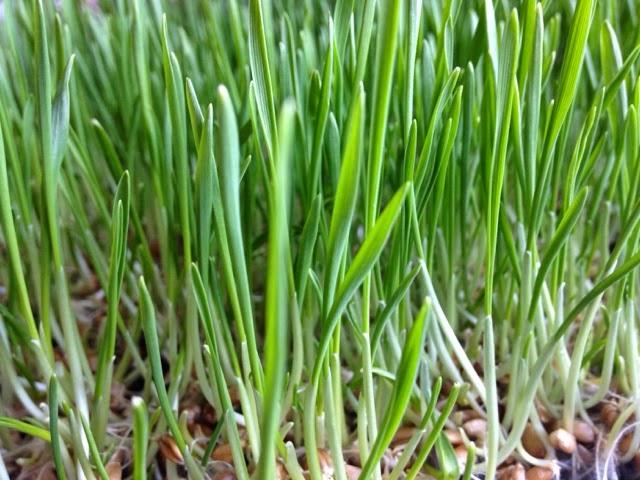
You can learn more about how to grow wheatgrass on this website below (the Hippocrates institute was founded by Ann Wigmore. He was a pioneer in natural food for healing. He said, 'Let food be thy medicine and medicine be thy food.')
It is a bit tricky to learn how to grow wheatgrass without a hands-on demonstration by someone who can teach you, so I've decided to create a step by step process guide with pictures that shows how I grow wheatgrass, with a few tips on the way.
First, you need to get some wheatberries, red or white. It doesn't matter which kind you use. You get excellent nutrients from either one, ***However, it is very important that you DO NOT try to USE CANNED WHEAT! The canning process makes it impossible for the wheat to germinate, and therefore it won't grow. You must use fresh wheat that has not been canned.
1. Soak your wheat overnight (or for about 8 hours) in a glass jar
Sprouting Trays:
Victorio VKP1014 4-Tray Kitchen Seed Sprouter
I got this router so that I could sprout other kinds of things, and there are four trays, and it is about $20, the same price as one sprout master. So it's a good deal. And it works well, you just have to sprout less we took in a stray, so I just split it in half.
Here are my provitamix sproutsI will do another post about spreading different things in the future.
The cheapest way to sprout, is in a mason jar. You need a mason jar, something like a cheesecloth to go over the top, and a rubber band. You soak your seeds overnight, and then in the morning your rinse them, dump the water out. And then put the cheesecloth and the rubber band on the top. It is optimal for them to be at a 45 degree angle. So put them upside down but tilted in a bowl, or in your dish drying rack. Rinse them 2 to 3 times a day, until your wheat berries are ready to plant (or whatever else you want to sprout)
Sprout Master First rinse in the sprout tray after soaking
Ready to plant (this is hard red wheat)
Below is a picture of white winter wheat ready to plant)
Planting
Day 1
Day 2
Day 3
Day 4 - When I uncover the wheatgrass
Day 5
 When you water your wheatgrass each day, turn your tray around, because it follows the sun and it will grow in quite a slant if you don't turn it. Turning it, also helps it to grow stronger since it finds the sun and turns the other way until it starts growing vertically.
When you water your wheatgrass each day, turn your tray around, because it follows the sun and it will grow in quite a slant if you don't turn it. Turning it, also helps it to grow stronger since it finds the sun and turns the other way until it starts growing vertically.
Day 6
Day 7
 You will know that your grass is ready to harvest, when the blade splits. If there are two planes, for each wheat berry, it is ready to harvest.
You will know that your grass is ready to harvest, when the blade splits. If there are two planes, for each wheat berry, it is ready to harvest. Just use some very sharp kitchen scissors, get a handful with one hand, and then cut it while you still have a good handle on your handful..
Just use some very sharp kitchen scissors, get a handful with one hand, and then cut it while you still have a good handle on your handful.. Then put that handful in your wheatgrass juicer, repeat until you have all the juice that you want to use at that time. It is good to drink between 1 to 3 ounces at a time. But if you're just starting out, I would recommend starting with about a half an ounce for a couple days and then increase from there. The morning is best, right when you wake up. When you have an empty stomach. It is not good to drink wheatgrass when you are full. So I drink it, and then let it sit for about a half hour before I have some fruit. Strain your juice before you drink it, so that you don't have little blades of grass in it. I usually just put a little bit of water into my regrets, and drink some water after I drink it.
Then put that handful in your wheatgrass juicer, repeat until you have all the juice that you want to use at that time. It is good to drink between 1 to 3 ounces at a time. But if you're just starting out, I would recommend starting with about a half an ounce for a couple days and then increase from there. The morning is best, right when you wake up. When you have an empty stomach. It is not good to drink wheatgrass when you are full. So I drink it, and then let it sit for about a half hour before I have some fruit. Strain your juice before you drink it, so that you don't have little blades of grass in it. I usually just put a little bit of water into my regrets, and drink some water after I drink it.There are many other ways to use wheatgrass, other than drinking it. You can learn about them in Ann Wigmore's book, The Wheatgrass Book.
My saintly mother-in-law gave me juicer. You can find many types of juicers online. I would recommend reading many reviews before you decide which one you want. Any good ones that are electric will probably run between $100 to $300.
(actually, it will keep growing every time you cut it, if you keep watering it, but after the second time, many nutrients from the soil will be gone, and it won't be baby grass anymore, but full grown adult grass, which doesn't have as many nutrients.... And tastes much more bitter. Believe me!)
Sometimes, if I need to save time, or I have more wheat grass that needs to be harvested than I can use at that time, I will cut it and put it in an airtight container in the fridge. The sooner you use it, the more live enzymes and nutrients it has. But some wheatgrass is better than no wheatgrass. It can last in the fridge for up to seven days.
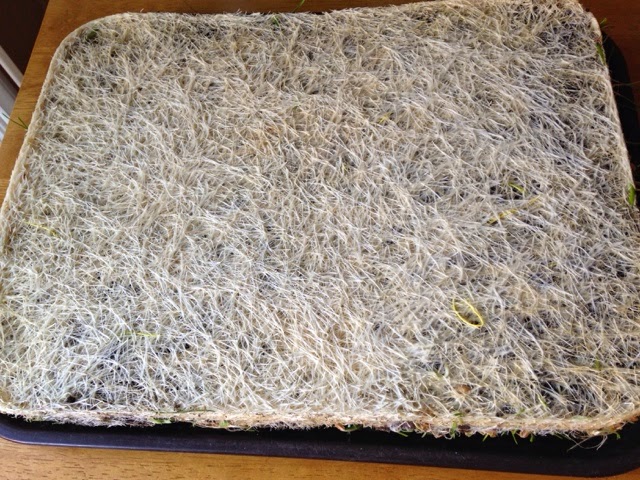 Wheat grass grows an amazing root system. After you have harvested your wheatgrass from the tray, you will have a wheatgrass Mat. The wheat grass mats can serve many purposes. You can compost them to create more organic matter to use to plant new wheatgrass, you can put it on top of your garden beds to enrich the soil, they will compost themselves eventually, while keeping weeds from growing. You can also use them to make a path through your garden bed, this is nice to keep mud off your shoes, and to mark the areas that you want to walk on.
Wheat grass grows an amazing root system. After you have harvested your wheatgrass from the tray, you will have a wheatgrass Mat. The wheat grass mats can serve many purposes. You can compost them to create more organic matter to use to plant new wheatgrass, you can put it on top of your garden beds to enrich the soil, they will compost themselves eventually, while keeping weeds from growing. You can also use them to make a path through your garden bed, this is nice to keep mud off your shoes, and to mark the areas that you want to walk on.Thursday, February 12, 2015
Chocolate Zucchini Muffins
Oh She Glows by Angela Liddon. Seriously, you want this cookbook. You really do! It is my favorite I think. Especially because of the pictures, and also because she does it the way I like, with real, fresh ingredients, not much processed vegan food products (if any), and she doesn't compromise taste for health. (It needs to taste good enough for my husband and son to enjoy it! That's important!
Let me tell you, this one hit it out of the park. Oil-free Chocolate Zucchini Muffins It makes me miss my big garden in Cleveland, and the crazy over producing zucchini plants that made so much zucchini I had to give it away (that was before I knew about Oh She Glows.... :)
Tuesday, February 10, 2015
Roasted Winter Salad Bowl - Oh She Glows
We made Roasted Winter Salad Bowl from OhSheGlows.com, and it was amazing!!! You'll really want to try it!! It's so good!
John scarfed it down!
I made some revisions: I doubled the potatoes (I had a lot I needed to use, and my boys love them!), I didn't give John any pepita seeds because they are too tough for him, I didn't have kale, so I used spinach, and I double that too.
I am so not into cold salads right now, and this hit the spot for all of us! Seth said this should be on the menu for the Northstar Cafe in Columbus, and I agree!
Subscribe to:
Posts (Atom)





